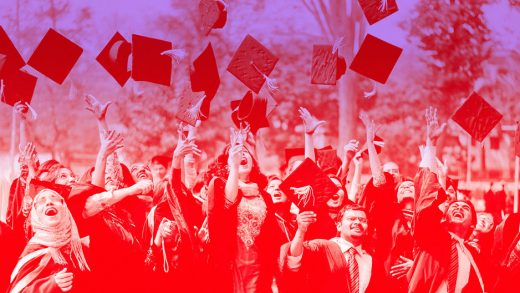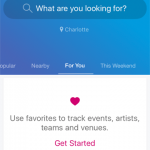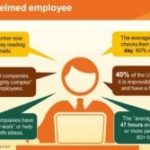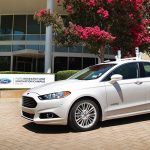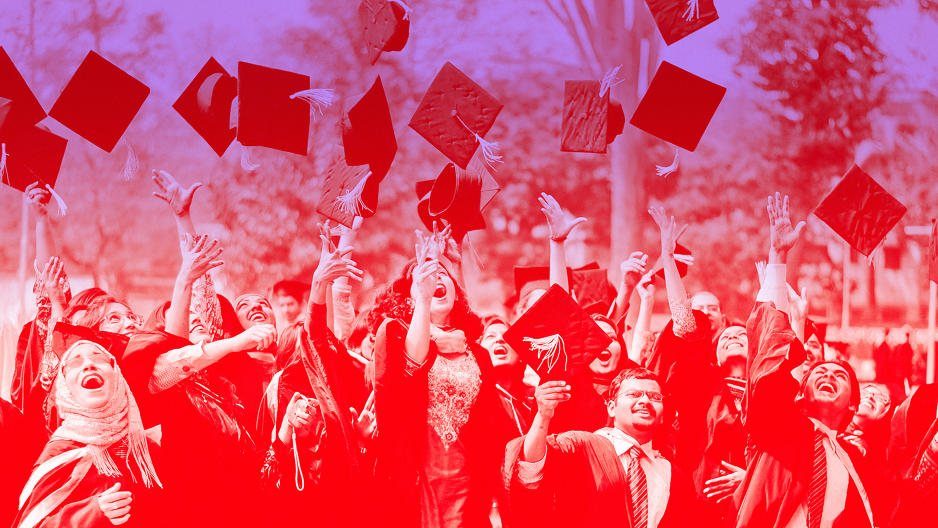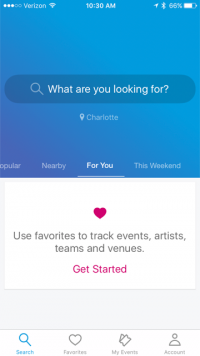The American Dream Is Under Threat. Can Higher Education Save It?
The engine that used to drive the American Dream is in danger of grinding to a halt. Nine out of 10 children born in 1940 went on to earn more than their parents, according to research published last week. But just half of children born in 1980, who are now in their mid-30s, can say the same today.
“The idea that you’re going to do better than your parents defines the American Dream,” says Howard Wolfson, a former political strategist who now oversees education initiatives for Bloomberg Philanthropies, the charitable organization founded by billionaire Mike Bloomberg. “For a lot of people, that’s not happening.”
Higher education, which once greased the wheels of America’s powerful economic engine, has lately been exacerbating the problem. Just one in four students at U.S. colleges and universities comes from a family on the bottom half of the income ladder. Yet data shows that the wage premium for higher education continues to rise; Americans with a four-year degree out-earn their peers by 98%, up from 64% in the 1980s. And while the post-recession job market has become more grueling for college graduates, the unemployment rate for civilians with a bachelor’s degree has been steadily falling since 2010, landing at 2.3% in November. In short, college is still a solid bet despite the cost.
Students from low- and moderate-income families are missing out on that opportunity, in many cases because they are overwhelmed or uninformed when it comes to the byzantine processes governing admissions and financial aid. But a coalition of colleges and universities wants to solve those challenges—and enroll an additional 50,000 high-achieving, lower-income students by 2025.
“Colleges and universities need to appreciate that they’re playing a critical social mission,” says Wolfson, whose team at Bloomberg will be convening the schools and funding research on their efforts. “They need to ensure that they provide a gateway for qualified kids regardless of background.”
So far, 30 top schools, based on their high graduation rates, have joined what Bloomberg Philanthropies has dubbed the American Talent Initiative. The list includes prominent Ivies like Harvard and Yale, large public universities like the University of California, Los Angeles and the University of Maryland, College Park, and private liberal arts colleges like Davidson and Williams.
Catharine Hill, an economist who served as president of Vassar College for the past decade before taking on a new role as managing director of nonprofit research firm Ithaka S+R, will oversee research on best practices developed by the participating institutions in partnership with the Aspen Institute. “You’ve got to get the students into your applicant pool, you’ve got to admit them, you’ve got to give them enough financial aid, and you’ve got to figure out how to support them,” Hill says. Simple in theory, but difficult in execution.
As a seasoned college president well versed in socioeconomic diversity—under her watch, Vassar won a $1 million prize for its success attracting low-income applicants—Hill sympathizes with the trade-offs that higher education’s leaders face. “We’ve got kids at the top end [of the income bracket] whose parents can write a check for $65,000 and in fact want a lot of the services that go along with that,” she says. Schools need to attract those students from wealthy families in order to cover their costs, but end up having to raise tuition to pay for the amenities and resources that privileged students expect to see. “Every dollar that you allocate to need-based financial aid is a dollar you don’t have to spend on something else that helps recruit the students who don’t need financial aid.”
At Franklin & Marshall College, one of the coalition schools, administrators have found success recruiting applicants through partnerships with K12 schools and enrichment programs that serve lower-income populations, such as public charter schools like KIPP and nonprofits like College Track. “Their goals and our goals are aligned,” says Dan Porterfield, president of Franklin & Marshall.
Under Porterfield’s watch, the college has also pursued a series of financial strategies designed to increase its aid budget: phasing out merit-based aid, increasing enrollment overall, and restructuring the college’s debt. “That work has really strengthened the talent base of the school,” says Porterfield, who also serves on the steering committee for the Bloomberg initiative. “Aid brings talent and talent benefits every student. Financial aid is an academic investment.”
CollegePoint, a free virtual advising service for high-achieving, lower-income students that Bloomberg Philanthropies launched two years ago, will serve as a companion to the American Talent Initiative. This past fall, CollegePoint advisors worked with 12,000 students.
“The country doesn’t work unless people know that these opportunities are available to them, that outstanding people can attend outstanding schools regardless of their circumstance,” Wolfson says.
In parallel, schools and organizations separate from the Bloomberg coalition are taking steps to increase access for lower-income students. This coming February, the University of Pennsylvania, for example, plans to introduce a free online course on “How to Apply to College,” via Coursera. Last summer, author and education advocate Dave Eggers helped orchestrate the launch of ScholarMatch, a college search tool designed for students from households earning less than $50,000 per year.
Higher education initiatives like these, on their own, will not solve the problem of rising inequality, which economists say accounts for 70% of the decline in upward mobility. Indeed, by design the American Talent Initiative focuses on atypical students who have overcome enormous obstacles and demonstrated exceptional talent. Porterfield and his peers see value in preparing those students to become leaders.
“The goal is to make sure that the institutions in this country that are the springboard to leadership opportunities open their doors and expand their vision so that 50,000 more low-income students have the advantage of attending,” he says.
Fifty-thousand more American dreamers, 50,000 fewer doubters: It’s a start.
Fast Company , Read Full Story
(59)

